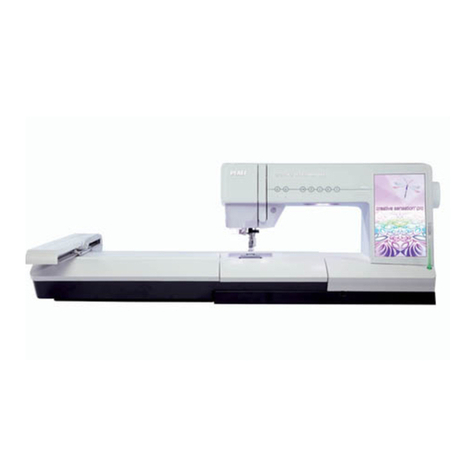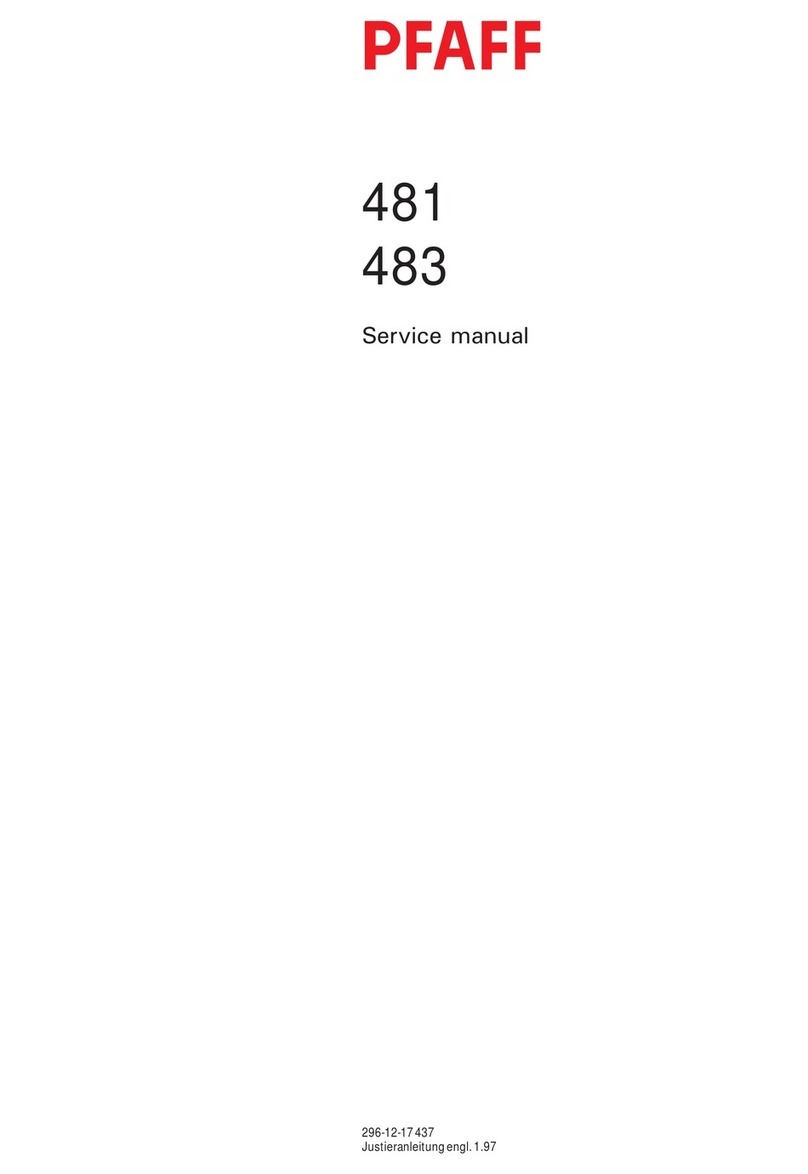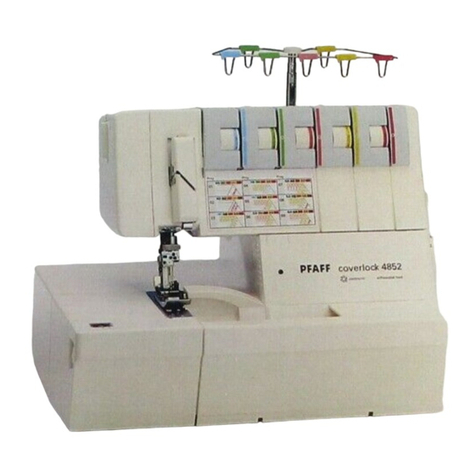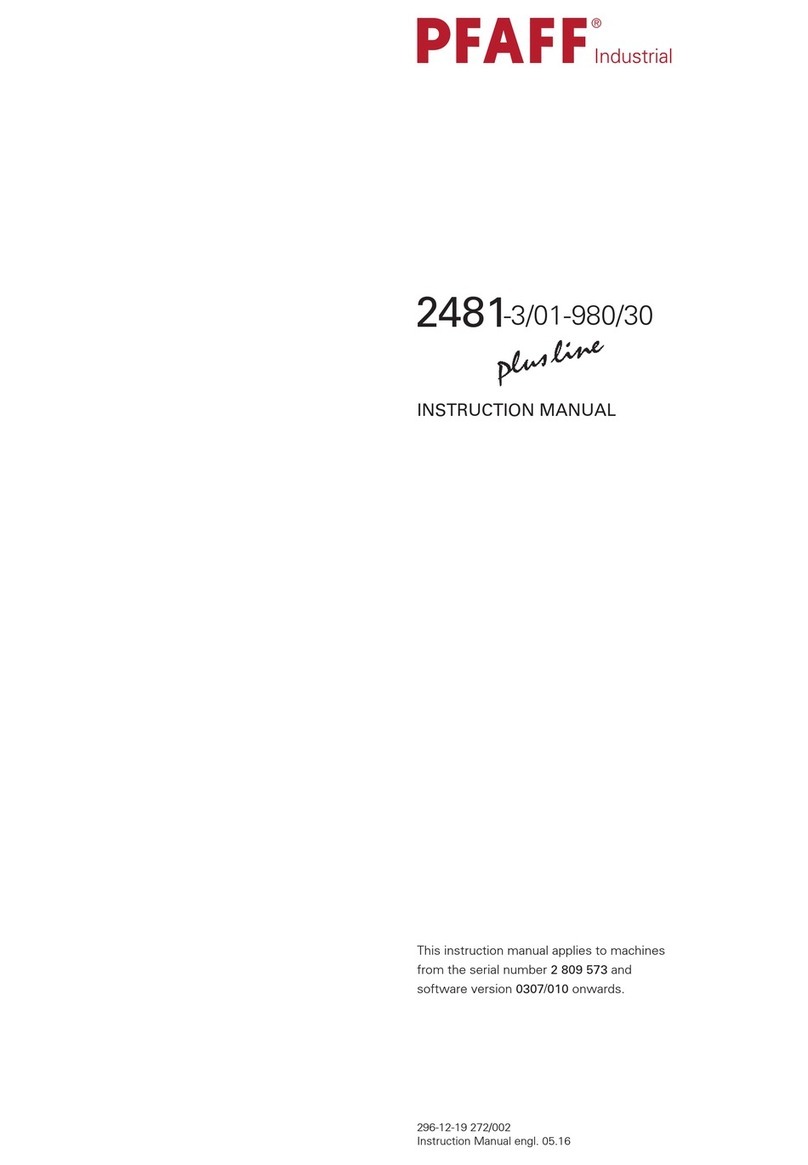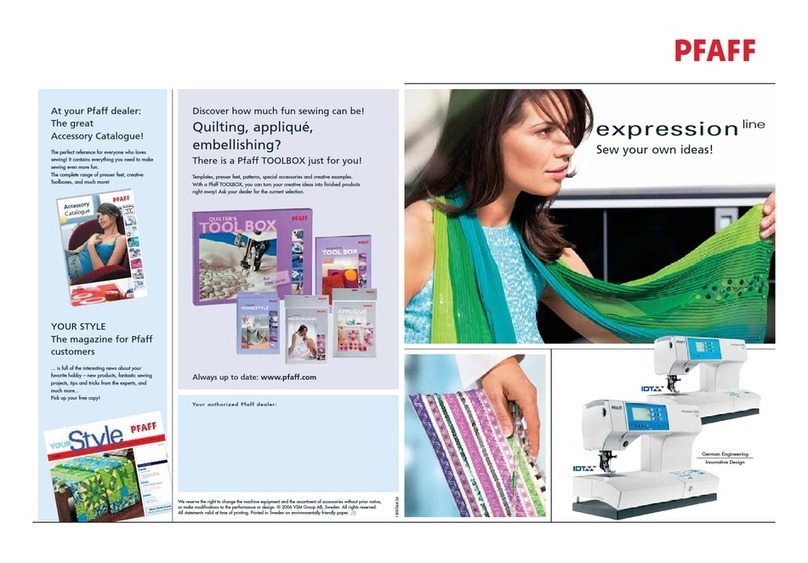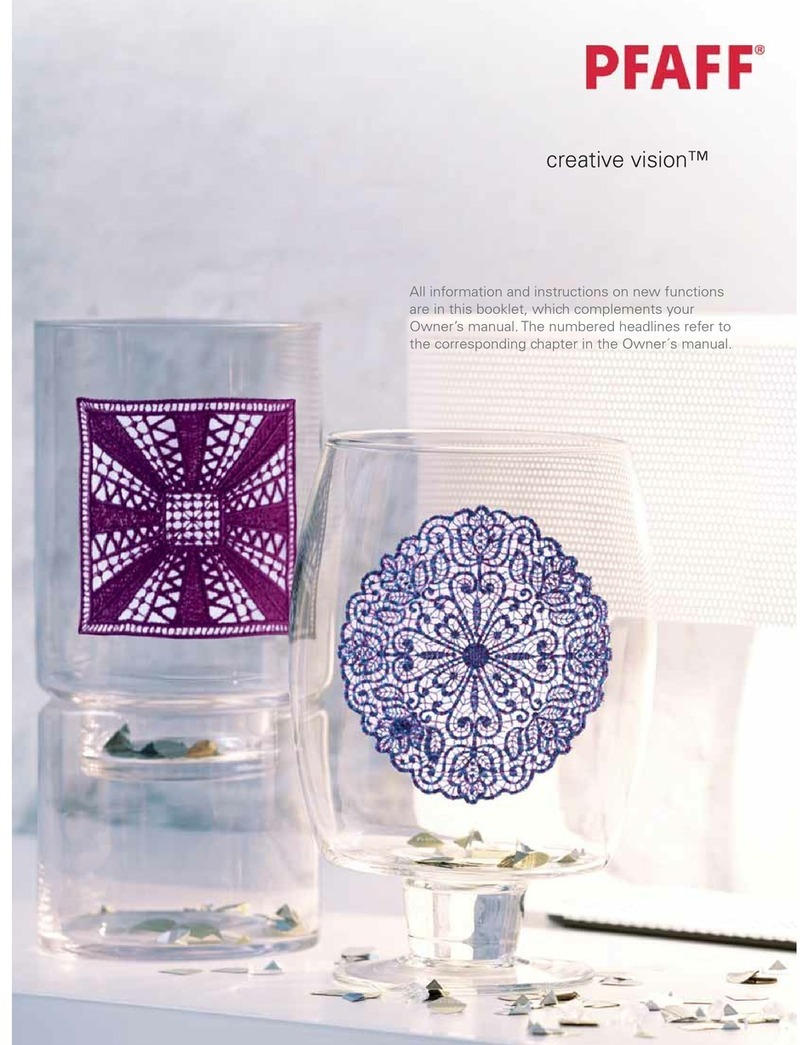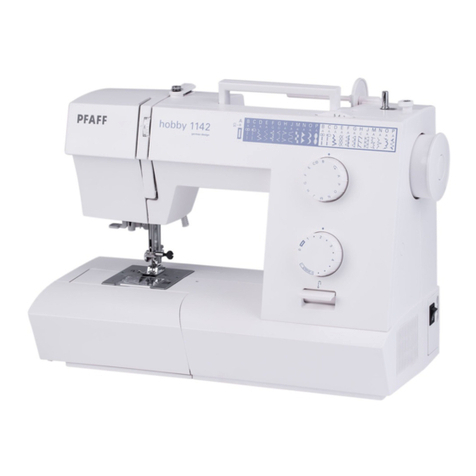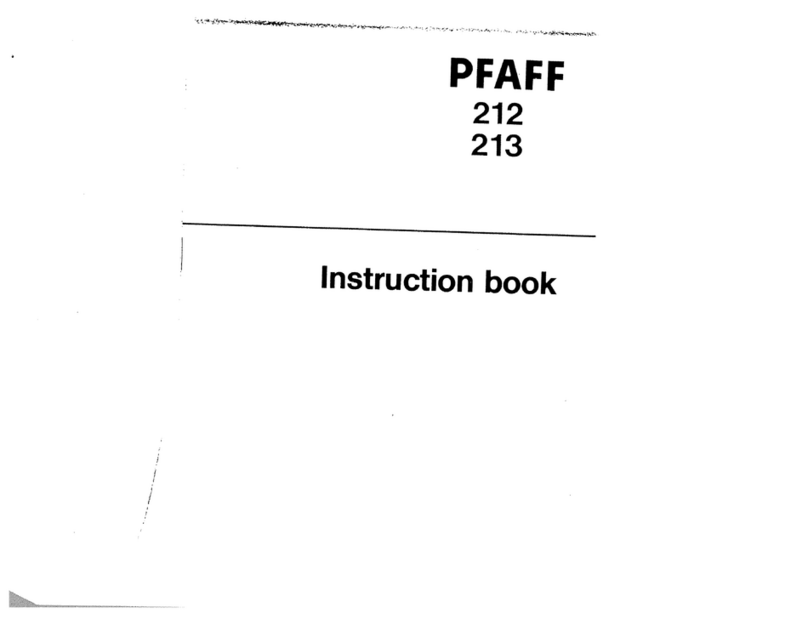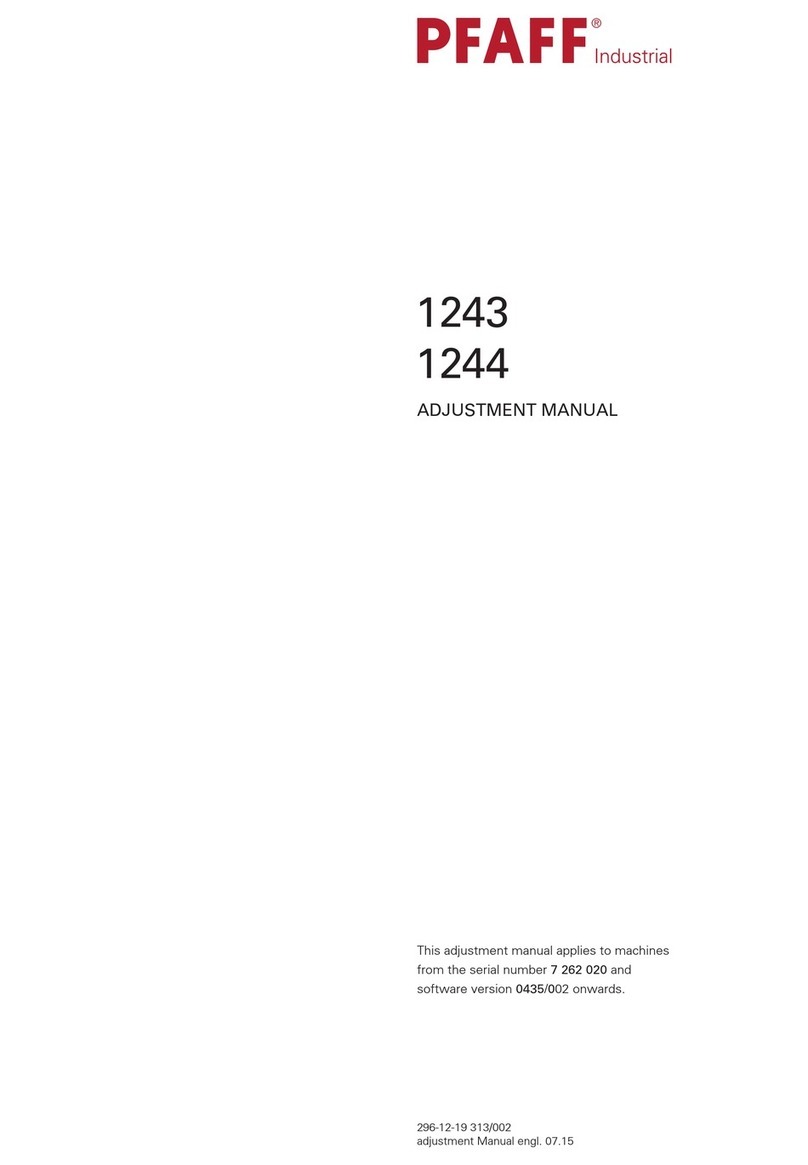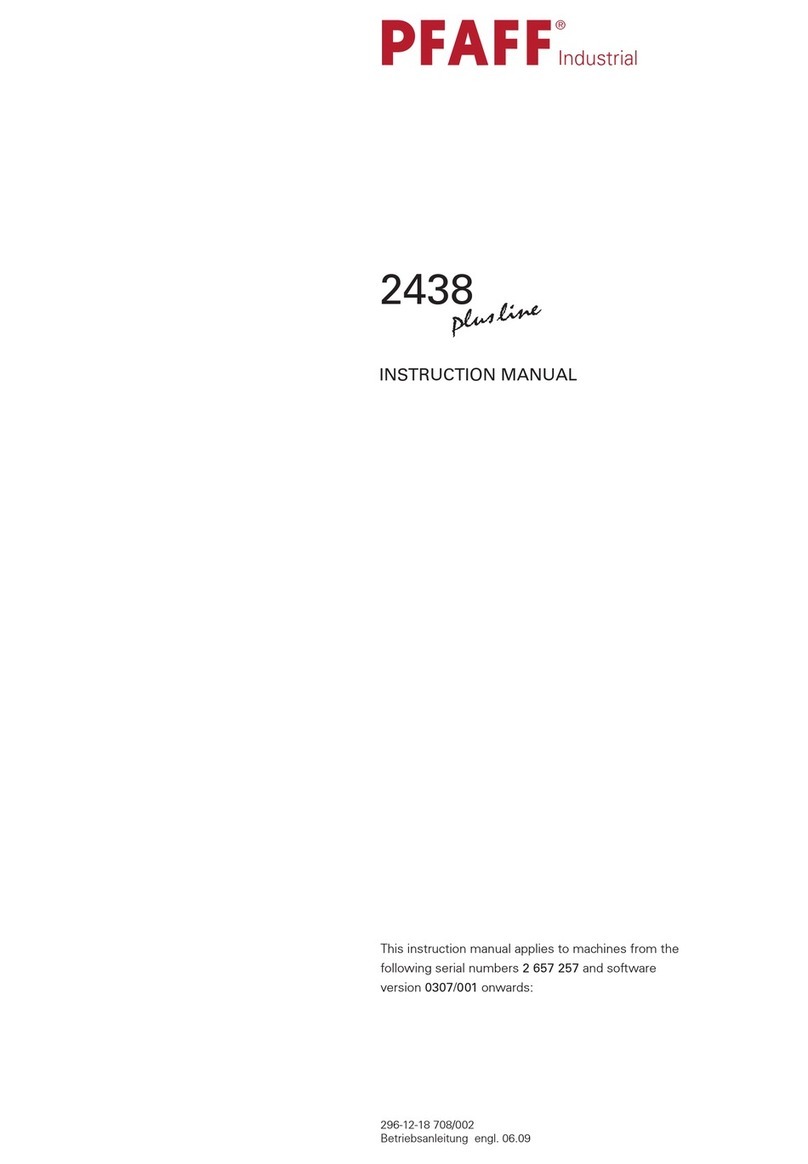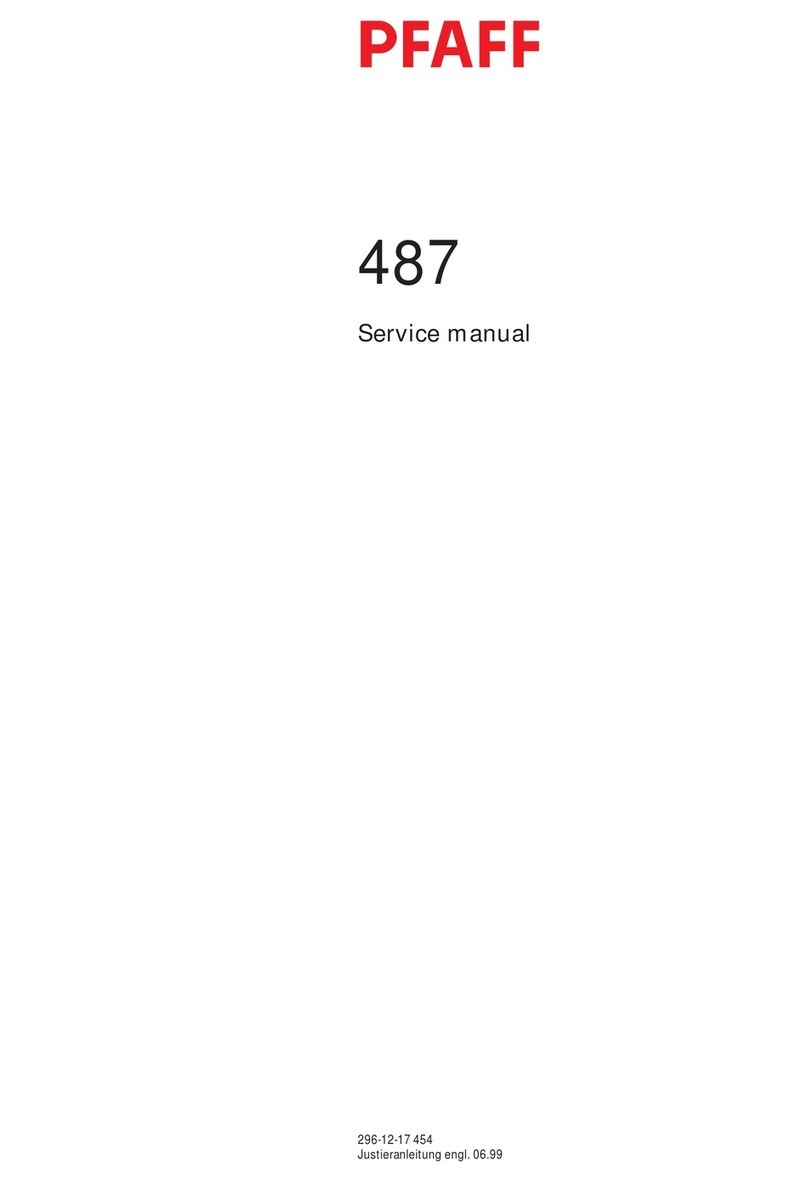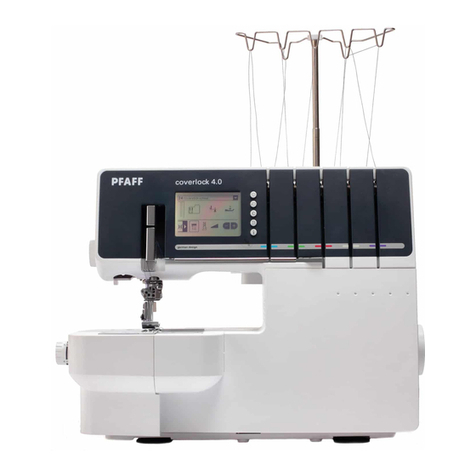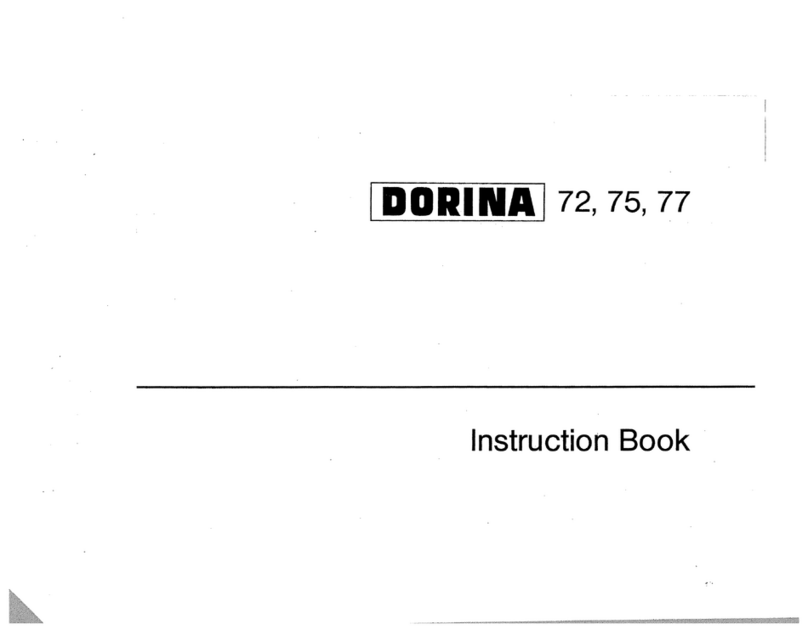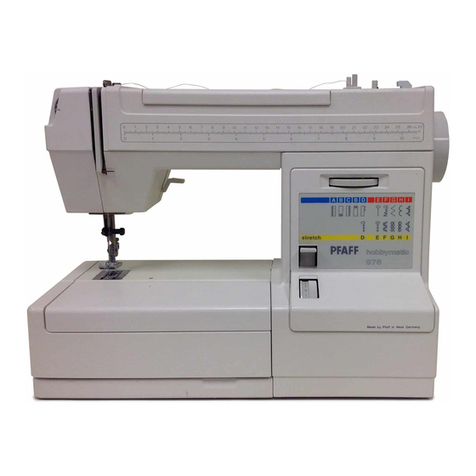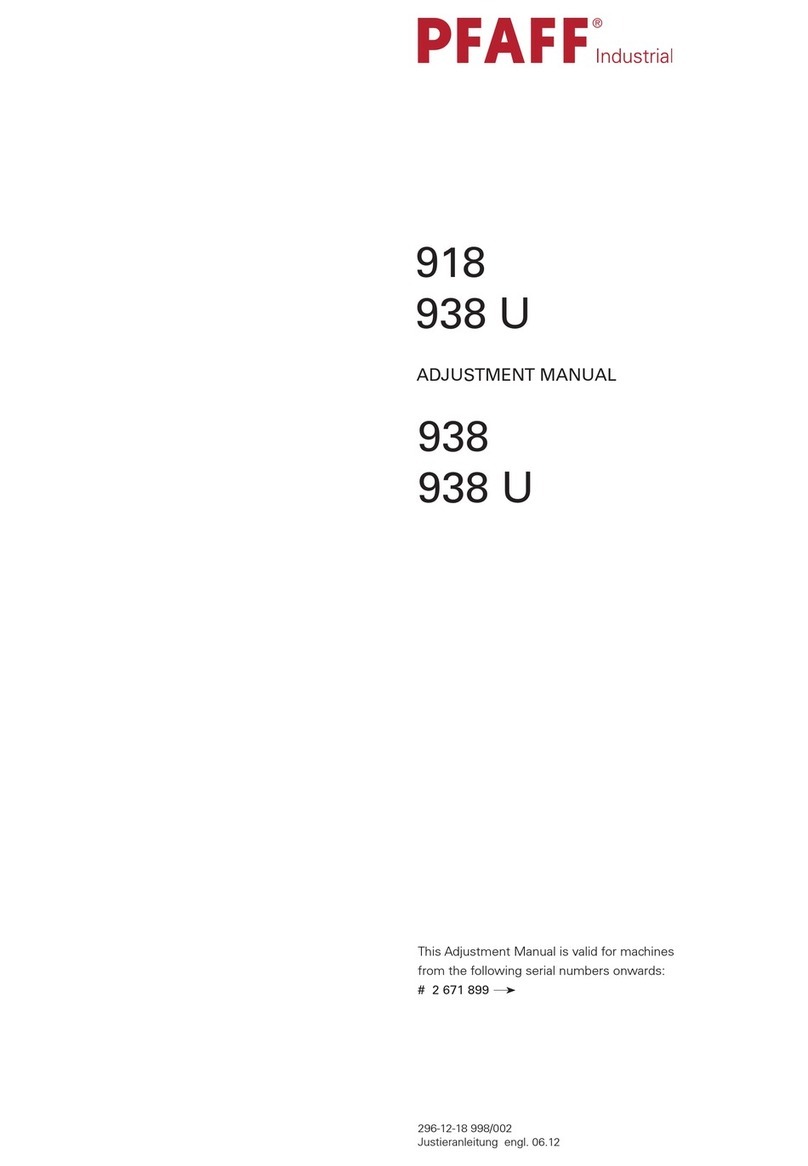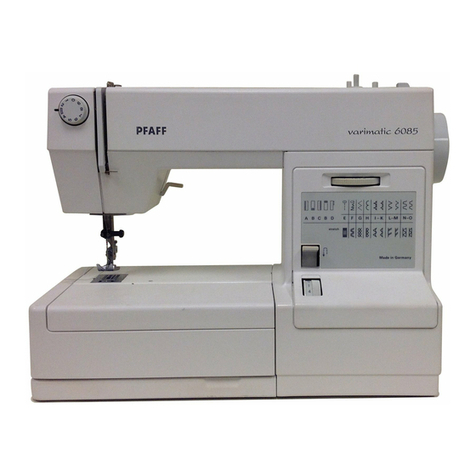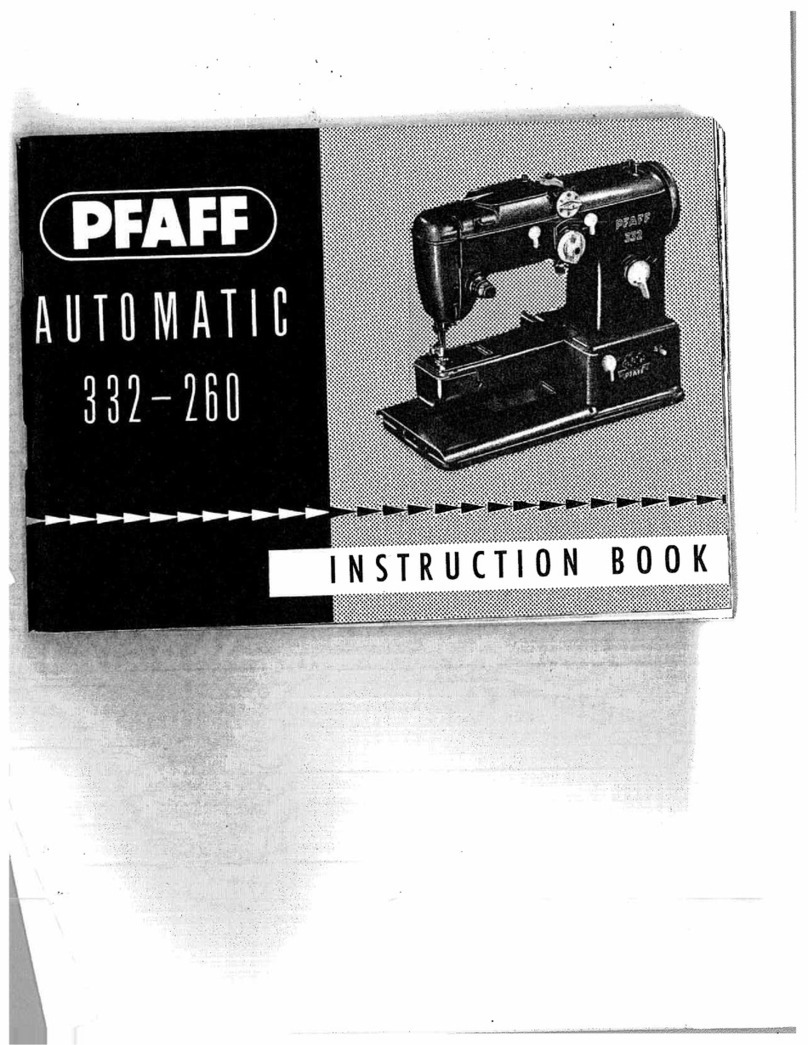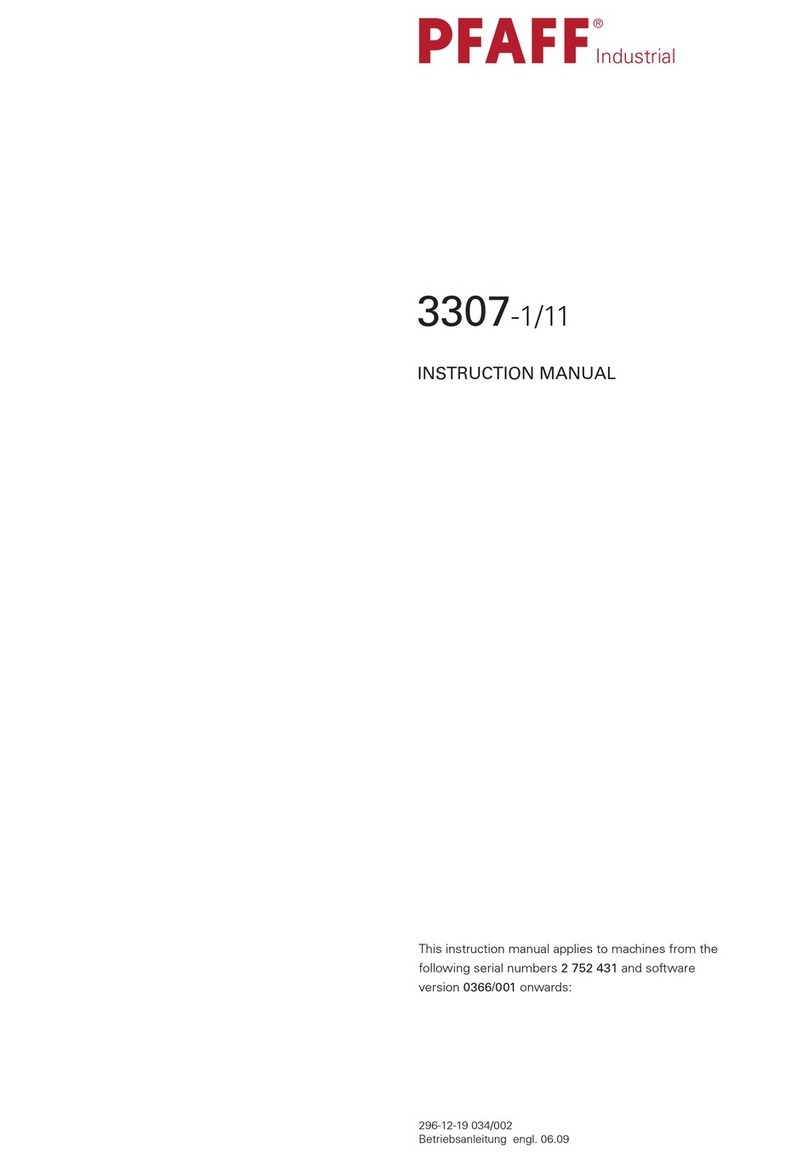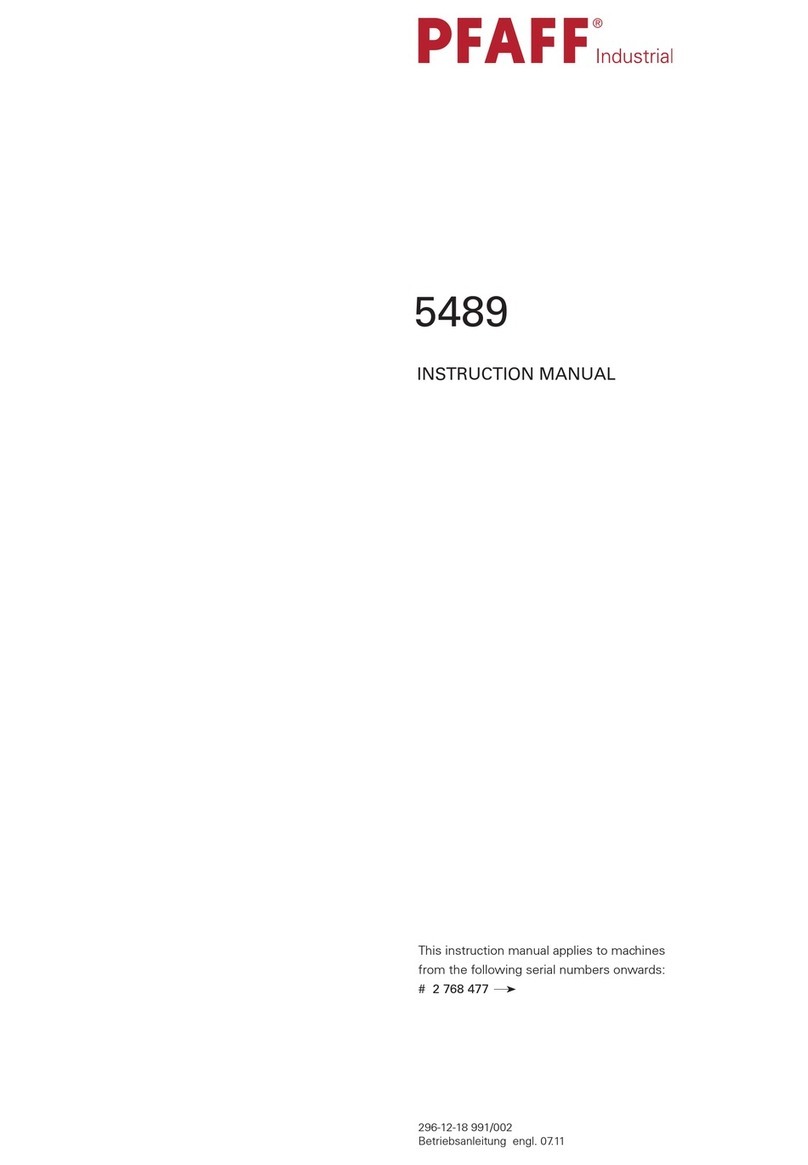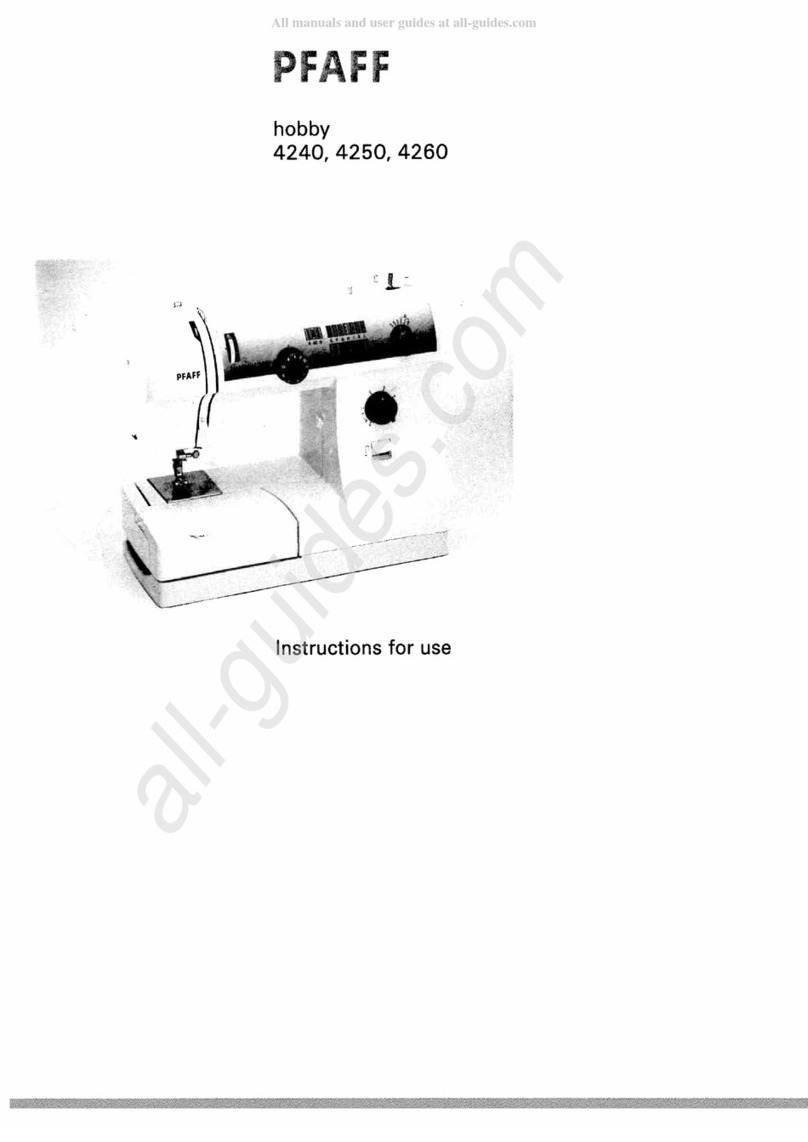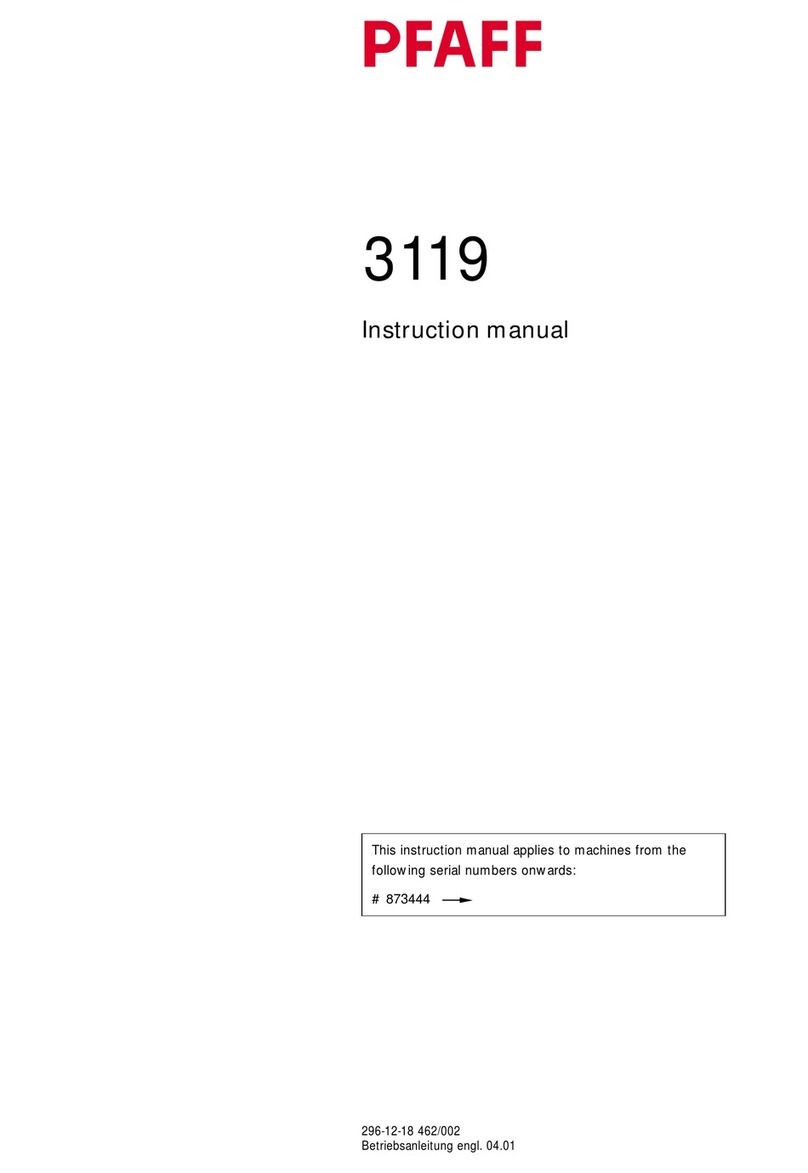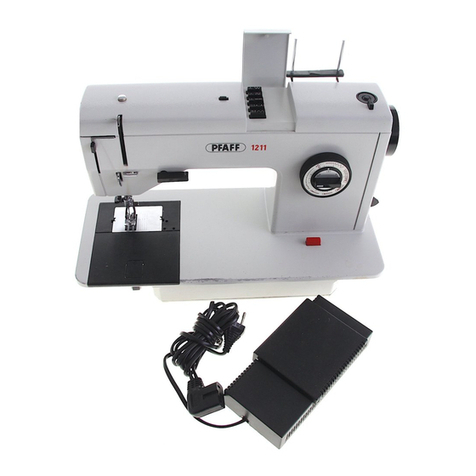
Contents
Contents ...............................................................................Chapter - Page
8.03 Switching the machine on/off .................................................................................... 8 - 5
9Setting up ................................................................................................................. 9 - 1
9.01 Inserting the needle ................................................................................................... 9 - 1
9.02 Winding the bobbin thread, regulating the winder tension ........................................ 9 - 2
9.03 Removing and inserting the bobbin case ................................................................... 9 - 3
9.04 Threading the bobbin case and adjusting the bobbin thread tension ......................... 9 - 3
9.05 Threading needle threads and regulating tensions..................................................... 9 - 4
10 Care and maintenance........................................................................................... 10 - 1
10.01 Cleaning the hook areas and the hooks ................................................................... 10 - 1
10.02 Oiling the hook......................................................................................................... 10 - 2
10.03 Checking/adjusting the air pressure ......................................................................... 10 - 3
10.04 Cleaning the air filter of the air-filter/lubricator ......................................................... 10 - 3
11 Adjustment ............................................................................................................. 11 - 1
11.01 Notes on adjustment ............................................................................................... 11 - 1
11.02 Tools, gauges and other equipment......................................................................... 11 - 1
11.03 Abbreviations ........................................................................................................... 11 - 1
11.04 Adjusting the basic machine................................................................................. 11 - 2
11.04.01 Adjusting the synchronizer....................................................................................... 11 - 2
11.04.02 Balance weight ........................................................................................................ 11 - 3
11.04.03 Positioning the feed dog in the needle plate cutout................................................. 11 - 4
11.04.04 Neutral position of the feed dog .............................................................................. 11 - 5
11.04.05 Feeding stroke of feed dog...................................................................................... 11 - 6
11.04.06 Lifting stroke of feed dog......................................................................................... 11 - 7
11.04.07 Feed dog height ....................................................................................................... 11 - 8
11.04.08 Needles in needle-hole centre ................................................................................. 11 - 9
11.04.09 Needle height (preliminary adjustment) ................................................................... 11 -10
11.04.10 Needle rise, hook-to-needle clearance, needle height (final adjustment)
and needle guard ..................................................................................................... 11 - 11
11.04.11 Bobbin case opener stroke ...................................................................................... 11 - 13
11.04.12 Re-engaging the slip-clutch...................................................................................... 11 -14
11.04.13 Clearance between presser foot and needle plate................................................... 11 -15
11.04.14 Knee lever................................................................................................................11-16
11.04.15 Needle thread tension release (on machines without Subclass -900/81)................. 11 -17
11.04.16 Needle thread tension release (on machines with Subclass -900/81) ...................... 11 -18
11.04.17 Bobbin winder.......................................................................................................... 11 -19
11.04.18 Presser foot pressure .............................................................................................. 11 - 20
11.04.19 Thread check spring and thread regulator................................................................ 11 - 21
11.05 Adjusting the thread trimmer 900/81.................................................................... 11 -22
11.05.01 Resting position of roller lever/radial position of control cam................................... 11 - 22
11.05.02 Thread-catcher height .............................................................................................. 11 - 23
11.05.03 Thread catcher position............................................................................................ 11 - 24
